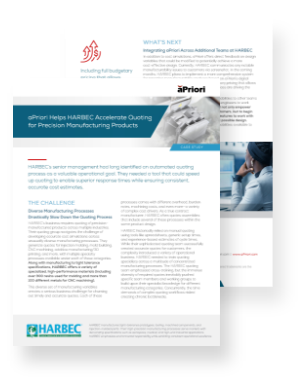Why Sourcing Should Steal the Car Dealer Digitalization Playbook
Automotive dealerships now run in a higher gear thanks to digitalization and sourcing transformation. Here’s how manufacturing procurement teams can follow suit.
Car dealers haven’t always had the best reputation. When I bought my car years ago, the experience was opaque and tedious. Dealers provided vastly different quotes for virtually the same car without a compelling explanation.
The dealer with the highest trade-in offer also added mysterious fees that made it the most expensive option. And another dealer’s “fast service” required me to spend a Saturday signing paperwork and waiting for the keys to drive home.
There’s often a mismatch between what car buyers want and dealer inventory. Dealers traditionally tried to persuade consumers to buy whatever’s on their lot. (Even if it’s not the buyer’s original choice.) But this strategy can neglect active buyers who leave a dealership frustrated because no one was available to help them.
The Procurement Transformation Blueprint
Automotive sales is completely different today. It’s fueled by a new level of transparency, efficiency, and automation that benefits both buyers and sellers. Consumers can get accurate quotes and begin the purchase or sales process online. Dealers focus on showcasing their inventory and services to interested prospects instead of running tired sales tactics to close a deal.
In many ways, manufacturing procurement operations are following the car dealership digital transformation arch. Manufacturing executives can use the dealer playbook to enable digital procurement and increase speed and accuracy.
1) Digitize your Operations
CarMax, Carvana, and other dealers gain speed and efficiency via the “designed for digital” model. When I sold my car to CarMax last year, I received an online offer before stepping into the showroom. Without using manual forms or spreadsheets that break the digital thread, CarMax moves quickly from quote to completed sale – while minimizing the potential for errors.
The Digital Procurement Play: Manufacturing brands typically mix digital and manual processes between their system of record and procurement system of engagement. This requires teams to retrieve information manually, such as component prices. Companies that connect and consolidate data through digitalization reduce the risk of using outdated information (or data that is incorrectly re-keyed into a system). And they use automation to simplify and accelerate operations, which can improve customer service.
2) Adopt a Should Cost Model
If you’re shopping for a new or pre-owned car today, local dealers likely have similar pricing. And you can attribute cost differences to a car’s age, condition, and mileage. This makes it easy for buyers and sellers to understand price discrepancies among options.
The Digital Procurement Play: Should cost analysis provides manufacturing brands with a detailed framework to estimate the total production cost of components, assemblies, or products. This includes current pricing for material costs, labor rates, and overhead. By using an accurate cost structure and historical cost data, product brands and their suppliers can negotiate specific points via fact-based negotiations. This approach enables teams to reach an agreement faster than negotiations that don’t rely on hard data.
3) Enable Self Service/Self Quoting
Automotive dealer sites enable buyers to compare cars and trucks by color, trim package/level, price, and more. Without contacting sales, consumers conduct “apples-to-apples” comparisons online to refine their search. This self-service/self-selection capability frees sales to focus on relevant prospects. And it can accelerate the entire sales process once buyers and dealers connect.
The Digital Procurement Play: Manufacturing brands often distribute RFQs to suppliers for projects that are outside of their core expertise. Example: A renewable energy product assembly requires high-speed machining. But a contract manufacturer (CM) that specializes in complex, higher tonnage production receives the RFQ. Based on its equipment, this CM likely can’t submit a competitive bid. And the lack of high-speed production capabilities adds project risk.
To reduce time wasted on misaligned buyers and sellers, proactive manufacturers are cataloging supplier capabilities (including equipment) and associated rates. Product brands then use this information to only send bids to qualified suppliers (existing or prospects).
4) Provide Transparency
Authorized U.S. dealers for Mazda, Toyota, and others typically don’t haggle. And brands including Honda and Mercedes-Benz are adopting similar fixed-price models in Australia. These trends illustrate the business case for replacing seemingly arbitrary quotes with fact-based offers.
The Digital Procurement Play: Productive relationships are built on more than fair pricing. Keys to streamlining manufacturing industry procurement include:
- Standardize the RFQ process so that suppliers and OEMs can have an “apples-to-apples” discussion regarding project requirements. This includes labor rates, machining capabilities (speeds and feeds), etc.
- Provide all specifications: OEMs tend to provide sourcing requirements via email or PDF. This paper-based, disconnected method typically doesn’t include the product and manufacturing information (PMI) embedded in model-based designs (3D CAD). Sharing 3D CAD details – and design updates – is central to accurate quoting and streamlining OEM-supplier operations.
- Enable collaboration: Apply the digital transformation feedback loop to sourcing by enabling OEMs and suppliers to “whiteboard.” Use 3D CAD designs to examine and address manufacturability issues, write “comments” that the combined team can view, etc. A collaboration portal can centralize sourcing project activities, which can help teams work faster and more effectively.
Use Digitization to Drive Operational Excellence
The automotive industry is a striking example of how digital tools can help to transform a venerable industry. Today’s car dealers are meeting consumers’ unyielding demands for speed, responsiveness, and transparency.
Product manufacturing procurement teams already have digitization pillars in place – including PLM and ERP systems, and sourcing platforms. Manufacturers have an opportunity to truly connect these systems and provide procurement teams with powerful supplier relationship management capabilities. Importantly, digital sourcing is also enabling manufacturers to collaborate with suppliers, and use supplier input to help lower costs and fast-track time to market.
See how Harbec is Saving Time and Money with Automated RFQs









